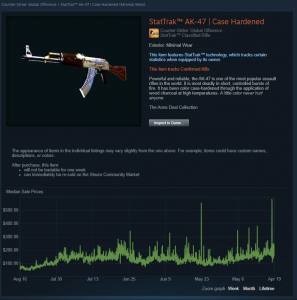How game developers profit from in-game cosmetics
While these items do not affect the actual gameplay mechanics, they offer an additional layer of personalization and enjoyment for the player.
UNITED STATES, May 18, 2023/EINPresswire.com/ -- In-game cosmetics refer to virtual items that players can purchase or acquire within a video game to enhance the appearance of their characters or gameplay experiences. These can include skins, weapon and vehicle customizations, emotes, and animations.In-game cosmetics have become increasingly popular over the years, with the rise of free-to-play games and microtransactions. Game developers have recognized the potential profitability of in-game cosmetics and implemented them to generate revenue.
Understanding the Demand for In-Game Cosmetics
The demand for in-game cosmetics stems from the desire for players to express their individuality and stand out from other players. In multiplayer games, where players interact with others in a virtual world, in-game cosmetics provide a way to differentiate themselves from others. Players can show off their unique style and personality by customizing their characters.
Moreover, in-game cosmetics provide a sense of exclusivity and prestige for players. Limited edition or rare cosmetics are highly sought-after by players, as they offer a sense of accomplishment and status. This drives players to spend money or invest time acquiring these items, with skins selling to generate revenue for game developers. For example. a rare CSGO skin sold for $500,000, with some valued at over a million.
The Business of In-Game Cosmetics
This makes the business of in-game cosmetics a lucrative one. Game developers constantly seek ways to monetize their games beyond the initial purchase price, and in-game cosmetics provide a sustainable revenue stream.
Many games offer players the option to purchase in-game currencies with real money, which can then be used to buy cosmetics. This is known as a microtransaction, and it has become a staple of free-to-play games. By offering players the ability to purchase cosmetics, game developers can generate revenue from players who would otherwise not spend money on the game.
How Game Developers Profit from In-Game Cosmetics
Game developers profit from in-game cosmetics through the sale of these items. In-game cosmetics are relatively low-cost items to produce, as they are purely digital and do not require physical production or shipping. As a result, the profit margins for in-game cosmetics are high.
Moreover, game developers can use in-game cosmetics to drive engagement and retention among players. By offering limited edition or rare cosmetics, game developers can incentivize players to continue playing the game and invest time and money into it. This also helps to build a loyal player base and creates a sense of community among players.
The Popularity of Skins
Valorant, CSGO, League of Legends, and Overwatch are some of the popular games offering in-game cosmetics. These games have created a thriving market for in-game cosmetics, with players spending millions of dollars on these items.
Valorant skins are among the most popular types of in-game cosmetics, with players spending hundreds of dollars on rare skins. These skins are often limited edition or exclusive, which drives up their value and demand. The community also likes discussing which Valorant weapons have better skins. For example, they often find themselves in a phantom vs vandal debate, further increasing awareness and want for these skins.
The most notable are CSGO skins. The rarity and exclusivity of these skins have created a secondary market for them, where players can buy and sell skins for real money, similar to how a stock market works. The skins market combined with item rarity and a growing CSGO player count allows for unreasonably high prices for in-game skins. The rarer the skin, the higher the price.
In-Game Cosmetic Controversies and Criticisms
While in-game cosmetics provide a significant revenue stream for game developers, they are not without controversy. Some players argue that the emphasis on in-game cosmetics takes away from the gameplay mechanics and distracts from the game's core experience. Others argue that the price of in-game cosmetics is too high and creates an unfair advantage for players who can afford to spend more money on the game.
However, these kinds of skins can't enhance player performance, and serve a purely cosmetic purpose. They have become a significant part of the gaming industry, providing a lucrative revenue stream for game developers and enhancing the gameplay experience for players.
Marta Juras
WIN.gg / Final Boss Entertainment
help@win.gg
Visit us on social media:
YouTube
TikTok
Facebook
Legal Disclaimer:
EIN Presswire provides this news content "as is" without warranty of any kind. We do not accept any responsibility or liability for the accuracy, content, images, videos, licenses, completeness, legality, or reliability of the information contained in this article. If you have any complaints or copyright issues related to this article, kindly contact the author above.



